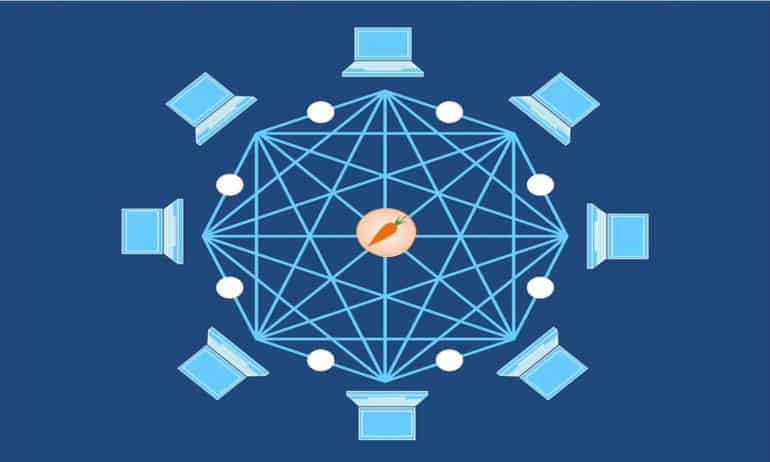The price of Bitcoin dramatically spiked in late 2017, making blockchain, the system behind it, a trending topic of 2018. Blockchain affects banking as well as the food system. From tracking farming processes to bringing more transparency to the food chain, this series of articles will take you through the blockchain systems in food.
Blockchain technology offers a secure way to track and transfer assets. It is a distributed, peer-to-peer, immutable ledger of transactions where participating members don’t need to rely on third-party intermediaries. Blockchain offers the potential of transparency and efficiency without sacrificing security—for this reason, it is gaining traction in the food industry, as well.
While many industries have adopted blockchain technology, the first major innovation using it involved banking and payments. Blockchain technology underpins the cryptocurrency Bitcoin. Now, companies use the technology as a cost-cutting and efficiency-boosting tool. IBM and Microsoft offer companies blockchain as a service, meaning they digitize transaction workflow through a secure and shared network, creating a valuable audit trail.
This technology’s ability to ensure provenance, transparency, traceability, and trust can be applied to the food system. By logging every single datapoint of food in a shared ledger, blockchain has the potential to allow farmers, producers, retailers, and customers alike to unlock transparency in the complex food supply chain.Customers are becoming more mindful of food and open to technology as an opportunity rather than a threat, says Raja Ramachandran, Founder of Ripe.io, which applies blockchain technology to farming.
However, the entities along the food supply chain often operate in silos, meaning they themselves suffer from a lack of transparency which leads to inefficiencies. Applying blockchain to the supply chain can not only connect the farmer, retailer, and producer on the same platform, but can also increase the customer loyalty.
UK-based Provenance hopes to build trust through transparency by applying blockchain to track tuna, guaranteeing that the fish are sustainably sourced. Tracking each step of the tuna supply chain and putting this data on an immutable, shared blockchain ledger adds visibility into fishing practices.
Similarly, blockchain-based platform Viant partnered with the World Wildlife Fund to implement their blockchain technology for sustainable tuna fishing in Fiji. By scanning tuna packaging, one can track where, when, and how the tuna was caught. This degree of transparency could reduce illegal fishing practices, which not only helps prevent human rights abuses in the fishing industry, but also helps the sustainability and profitability of the industry.
As a global B2B marketplace for financial services, Sentinel Chain is accepting the use livestock as collateral. It enables farmers to transform livestock from ‘dead capital’ to a fungible asset with a transparent and clear-defined value.
As more consumers demand this transparency in the food system, more companies will invest in these blockchain systems to do so. Consumers are able to vote with their fork and demand transparency through their food purchases, influencing food producers and allowing individuals and organizations in the food industry to redesign commerce through technology, pushing towards more clear and trusted data and information.















